18 Amazing Things To Do in Chiang Mai (And Outside) 2025
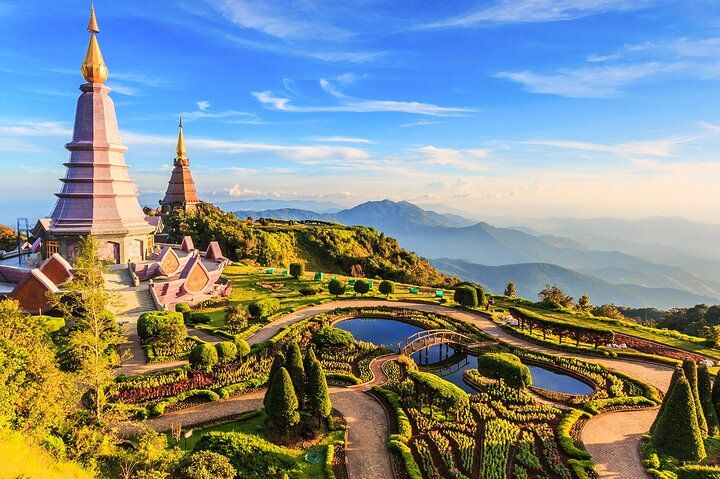
Welcome guys!
Today, we’re diving headfirst into the magic of Chiang Mai – the Rose of the North, the cultural heart of Northern Thailand! Forget everything you thought you knew about paradise; this city, nestled amidst misty mountains, is a vibrant tapestry of ancient traditions, thrilling adventures, and enough delicious local food to make your taste buds sing.
As a self-proclaimed Chiang Mai fanatic, someone who’s wandered its ancient streets, chatted with monks, and climbed its “sticky” waterfalls more times than I can count, I’m here to spill the beans on the absolute best things to do in and around this incredible popular destination. So, buckle up, buttercups, because your ultimate Chiang Mai travel guidestarts right now!
1. Temple Hopping Extravaganza: Where History Comes Alive

You can’t set foot in Chiang Mai without getting your temple fix. Seriously, they’re everywhere, each one a shimmering testament to Thai artistry and devotion. It’s like a spiritual scavenger hunt, and let me tell you, it’s one of my favorite things to do!
First up, Wat Chedi Luang. This grand dame of temples, right in the heart of the Old City, is a magnificent sight. Its massive, ruined stupa, complete with elephant carvings, tells tales of centuries past. I’ve spent a lot of time just sitting in its presence, feeling the weight of history. Don’t miss the “Monk Chat” program here – it’s a great way to connect with Thai people and learn about Buddhist philosophy in a relaxed, informal setting. You can ask anything, no judgment, just genuine curiosity!
Then there’s Wat Phra Singh, a truly most beautiful temple with its exquisite Lanna-style architecture and revered Buddha image. It gleams, it shines, it practically winks at you to come closer. Take a short walk from the city center, and you’ll be transported. The temple grounds are meticulously kept, offering a serene escape.
For a unique experience, check out Wat Umong. This forest temple, a little outside the main bustle, feels like stepping into a peaceful, ancient world. With its meditation tunnels and a sprawling, tranquil compound, it’s the perfect place to find some inner calm. I always leave feeling incredibly refreshed.
And, of course, the iconic Doi Suthep Temple (full name: Wat Phra That Doi Suthep). Perched high on a mountain overlooking the city, it’s a must-see. The climb up the Naga-lined staircase (or a quick funicular ride if your calves are protesting!) is worth every step for the great view of Chiang Mai below. The golden chedi at the top is absolutely breathtaking, especially at sunrise or sunset. You can easily catch a red truck from the Old City to get there. Trust me, if you don’t visit Wat Phra That Doi Suthep, have you even been to Chiang Mai? Some say no!
A little gem that’s quickly becoming a favorite is Wat Pha Lat, often accessed by hiking the monk’s trail. This hidden temple, nestled in the jungle on the way up to Doi Suthep, offers an incredibly tranquil and atmospheric experience away from the larger crowds. It’s truly one of the unique things to discover.
2. Dive into the Deliciousness: Chiang Mai’s Street Food Scene

Prepare your taste buds, because Chiang Mai’s street food is legendary! This city is a foodie paradise, and exploring its culinary landscape is one of the best things you can do.
You absolutely HAVE to try Khao Soi, the quintessential Northern Thai noodle curry. It’s creamy, slightly spicy, rich, and utterly addictive. Every local has their favorite spot, and you’ll find it everywhere from small food stalls to bustling local market eateries. I swear, I dream about Khao Soi when I’m away!
Beyond Khao Soi, the Chiang Mai Gate area, especially in the evenings, transforms into a vibrant hub of street vendorsdishing out all sorts of delicious local food. From crispy pork belly to grilled skewers, fresh fruit shakes to mango sticky rice, it’s a feast for the senses. Just wander, follow your nose, and be adventurous!
For a truly immersive culinary adventure, take a Thai cooking class. It’s hands-down the best way to understand the flavors and techniques of Thai cuisine. You’ll often start with a trip to a local market to gather fresh ingredients, then learn to whip up some of your favorite dishes. I’ve done a few, and each time I pick up new tips and tricks – plus, you get to eat everything you make, which is a win-win!
3. Ethical Elephant Encounters: A Heartwarming Experience

This is a big one, folks, and something I’m incredibly passionate about. If you want to interact with elephants in Northern Thailand, please choose wisely. The Elephant Nature Park is the gold standard for ethical elephant sanctuaries. Here, rescued elephants live freely in their natural habitat, and you can observe them in a responsible and respectful way. No riding, no harmful practices, just pure, unadulterated elephant joy.
Spending a day at an ethical sanctuary like Elephant Nature Park is an unforgettable experience. You learn about these magnificent creatures, their stories, and the incredible work being done to protect them in their natural environment. It’s a truly heartwarming and educational visit that will stay with you long after you leave. There are other reputable elephant sanctuaries popping up, so do your research and make sure your visit supports their well-being.
4. Market Mania: Shop ’til You Drop (or Eat!)

Chiang Mai’s night markets are iconic, bustling hubs of activity that come alive as the sun sets. The Chiang Mai Night Bazaar is probably the most famous, a sprawling maze of stalls selling everything from clothing and handicrafts to souvenirs and, of course, endless food. It’s a great place to practice your bargaining skills and find some unique treasures.
But my absolute favorite has to be the Sunday Walking Street Market (also known as the Sunday Night Market or Tha Pae Walking Street). This weekly spectacle transforms the main road of the Old Town into a pedestrian-only paradise. It’s packed with incredible local delicacies, artisan crafts, live music, and a vibrant atmosphere that’s simply infectious. Arrive early on Sunday evening to beat the biggest crowds and truly soak it all in. You’ll find unique items you won’t see elsewhere, supporting local artists and communities.
Beyond the night markets, immerse yourself in the daily life of a local market like Warorot Market (Kad Luang). It’s a sensory overload in the best possible way, with fresh produce, spices, flowers, and an authentic glimpse into the daily routines of the Thai people. It’s a fantastic spot for photography and to feel truly immersed.
5. Chase Waterfalls: Nature’s Refreshing Embrace

Chiang Mai is surrounded by lush, green landscapes, and that means waterfalls! One of the most unique and fun experiences you can have is climbing the Sticky Waterfalls, officially known as Bua Tong Waterfalls. What makes them “sticky” is the unique mineral deposit on the rocks, providing incredible grip. You can literally walk right up them, against the flow of the water, without slipping! It’s an exhilarating and refreshing adventure, especially on a hot day. I still can’t get over how much fun it is!
For something grander, a trip to Doi Inthanon National Park is a must. Home to Thailand’s highest mountain, Doi Inthanon, this park offers stunning vistas, lush cloud forests, and several beautiful waterfalls, including the impressive Wachirathan and Mae Klang waterfalls. The drive itself is scenic, and you can visit the Royal Pagodas, built to honor the King and Queen, which are surrounded by beautiful gardens. It’s one of the best day trips you can take from Chiang Mai, offering a cool escape from the city heat. The highest peak itself might be just a sign, but the journey and the surrounding beauty are truly majestic.
6. Doi Inthanon National Park: Top of Thailand!

As mentioned, Doi Inthanon National Park deserves its own shout-out. It’s not just about the waterfalls; it’s about standing on the highest mountain in Thailand! The park is a haven for birdwatchers and nature lovers, with diverse ecosystems and cooler temperatures at higher altitudes.
Beyond the summit, explore the Ang Ka Luang Nature Trail, a moss-covered boardwalk through a cloud forest that feels straight out of a fairy tale. The twin pagodas of Phra Mahathat Naphamethanidon and Phra Mahathat Naphaphon Bhumisiri, dedicated to the King and Queen, are also incredible, with beautifully manicured gardens and sweeping panoramic views. It’s a day trip that offers a fantastic blend of natural beauty and cultural significance.
7. Discover the Artsy Side: Nimmanhaemin Road & Baan Kang Wat

If you’re looking for a different vibe, head to Nimmanhaemin Road, often called “Nimman.” This trendy, bohemian neighborhood is packed with chic cafes, stylish boutiques, art galleries, and a vibrant coffee shop scene. It’s where the cool kids hang out, and it’s a great place to people-watch, grab a delicious brunch, or find some unique local designs. I love spending an afternoon just hopping between cafes, soaking up the creative energy.
For an even more artistic and authentic experience, seek out Baan Kang Wat Artists Village. This charming community of independent shops, studios, and cafes feels like a hidden oasis. You can browse handmade crafts, attend workshops, or simply relax in the peaceful, leafy surroundings. It’s a refreshing change of pace from the bustling markets and a wonderful way to support local artisans. It’s one of those top things to do if you appreciate local talent.
8. Relax and Rejuvenate: Traditional Thai Massage

After all that exploring, your body will thank you for a traditional Thai massage. Seriously, it’s a game-changer! Unlike a typical oil massage, Thai massage involves stretching, pressure points, and deep tissue work that leaves you feeling incredibly limber and relaxed. You’ll find massage parlors on almost every street, from simple, no-frills spots to luxurious spas. Don’t be shy – treat yourself! It’s one of the absolute best things to do to unwind.
9. A Dose of Culture: Cultural Centre & Museums

Want to dive deeper into Lanna history and culture? Head to the Chiang Mai City Arts and Cultural Centre. It’s centrally located in the Old City and offers fascinating insights into the region’s rich heritage. Nearby, you’ll also find the Lanna Folklife Museum, showcasing traditional Lanna life and customs.
For a unique cultural immersion, consider attending a Khantoke dinner. It’s a traditional Northern Thai dinner served on a low, round table, often accompanied by traditional music and dance performances. It’s a wonderful way to experience local customs and savor authentic flavors.
10. Get Sporty: Muay Thai Fight

If you’re feeling adventurous and want to experience a raw, energetic slice of Thai culture, catch a Muay Thai fight. This national sport, also known as “Thai boxing,” is powerful and mesmerizing. There are several stadiums in Chiang Mai where you can witness a live match. The atmosphere is electric, and it’s an incredible display of skill and discipline. It’s definitely one of the unique things to add to your itinerary if you’re looking for something high-octane!
11. Day Trip to Chiang Rai: White Temple Wonders

While technically a separate city, a day trip to Chiang Rai is a popular and rewarding excursion from Chiang Mai, and for good reason! The star attraction is the magnificent Wat Rong Khun, more famously known as the White Temple. This contemporary, privately-owned art exhibit in the style of a Buddhist temple is absolutely stunning and unlike any other temple you’ll see in Thailand. It’s an ethereal, sparkling masterpiece.
While you’re in Chiang Rai, you can also visit the unique Baan Dam Museum (Black House), a collection of traditional Northern Thai buildings filled with dark, intriguing art, and the beautiful Blue Temple (Wat Rong Suea Ten). It’s a full day, but totally worth it for the artistic and cultural diversity it offers. It’s definitely one of the top places to visit in Northern Thailand.
12. Hot Springs and Serenity: San Kamphaeng Hot Springs

Looking for a little relaxation and natural therapy? Head to San Kamphaeng Hot Springs. Located about an hour’s drive from Chiang Mai, these natural sulfur springs are a perfect place to soak your weary bones. You can wade in the mineral-rich waters, boil eggs in the super-hot springs, or even enjoy a traditional Thai massage. The surrounding park area is also lovely for a stroll. It’s a great escape for a few hours and a truly soothing experience.
13. Go Ziplining or Jungle Trekking: Adventure Awaits!

For the adrenaline junkies and nature lovers, Chiang Mai offers fantastic opportunities for ziplining and jungle trekking. Soar through the canopy on exhilarating zipline courses, experiencing the lush forests from a bird’s-eye view. Or, embark on a multi-day trek through the hills, visiting remote hill tribe villages and discovering hidden waterfalls. Many tours offer responsible and immersive experiences with local guide support, providing a deeper understanding of the region’s diverse landscapes and cultures. It’s a great way to get off the beaten path and explore the raw beauty of Northern Thailand.
14. Explore Doi Pui and Hmong Village: Beyond Doi Suthep

After visiting Doi Suthep Temple, don’t just turn back! Continue up the mountain to Doi Pui, where you’ll find a charming Hmong hill tribe village. It’s a bit touristy, but still offers a glimpse into the traditional way of life of the hill tribes. You can browse their handicrafts, enjoy a cup of coffee with a great view over the valley, and soak in the cooler mountain air. It’s a nice extension to your Doi Suthep adventure.
15. The Grand Canyon Chiang Mai: A Refreshing Dip

Yes, Chiang Mai has its own “Grand Canyon”! This former quarry turned swimming spot is a popular local hangout, especially on hot days. It offers cliff jumping (if you dare!), inflatable obstacle courses, and plenty of space to swim and relax. There are usually food and drink vendors on site, making it a fun and refreshing way to spend an afternoon. It’s one of those top things to do that might surprise you!
16. Riverside Charm: Ping River Strolls and Dinner Cruises

The Ping River winds its way through Chiang Mai, offering a different perspective of the city. Take a leisurely stroll along its banks, especially around sunset, and enjoy the calmer atmosphere. You can also opt for a boat trip or a dinner cruise, providing a romantic setting and unique views of the illuminated bridges and riverside temples. It’s a pleasant contrast to the bustling city streets.
17. Celebrate the Yi Peng Festival: A Magical Experience

If your timing is right (usually in November), experiencing the Yi Peng Festivals is an absolute dream. This festival of lights, where thousands of paper lanterns are released into the night sky, is one of the most magical and visually stunning events you could ever witness. The main event usually takes place outside the city, but you can also see smaller releases and celebrations around the Ping River and various temples. It’s truly an unforgettable spectacle, and one of the best timeto visit Chiang Mai if you want to witness something truly special. Book well in advance if you plan to attend!
18. Wander the Old City Walls and Gates: A Walk Through Time

Finally, dedicate some time to simply wander! The Old City of Chiang Mai is encircled by ancient old city walls and a moat, with several historical gates like the Tha Pae Gate and Chiang Mai Gate. Walking or cycling around these ancient structures provides a real sense of the city’s rich history as the former capital of the Lanna Kingdom. You’ll stumble upon charming guesthouses, cozy cafes, and more stunning ancient temples around every corner. It’s the easiest way to truly absorb the ambiance and discover your own hidden gems.
Getting Around Like a Pro:

Chiang Mai is surprisingly walkable, especially within the Old City. For longer distances, the iconic red truck(songthaew) is your best option and often the easiest way to get around, operating like shared taxis. Just flag one down, tell them where you’re going, and negotiate a price. Tuk-tuks and Grab (Southeast Asia’s version of Uber/Lyft) are also readily available. For day trips, consider hiring a private driver or joining organized tours for convenience.
Best Time to Visit Chiang Mai:

While Chiang Mai is beautiful year-round, the best time to visit is generally from November to February, when the weather is cooler and drier, making it perfect for exploring. March to May can be very hot, and June to October is the rainy season, though showers are often short and refreshing, leaving behind lush landscapes.
Outside Chiang Mai and North Thailand : The Mae Hong Son Loop

f you’re looking for an epic adventure that combines stunning mountain scenery, authentic culture, winding roads, and delicious local eats, this is it. Trust me, this loop isn’t just a drive; it’s a journey for the soul, and it left me completely mesmerized. I’ve done it, I’ve loved it, and now I’m spilling all the beans so you can have your own unforgettable experience!
The Mae Hong Son Loop is renowned for its 1,864 curves – a number that might make some folks a little nervous, but for us adventure-seekers, it just adds to the thrill! Starting and ending in Chiang Mai, this circular route takes you through some of the most picturesque landscapes and charming towns in the region. It’s truly one of the best ways to experience the authentic heart of Northern Thailand.
Why Do the Mae Hong Son Loop? The Lowdown from a Local-at-Heart

Honestly, it’s a spiritual experience. The Mae Hong Son Loop takes you deep into the mountainous heart of Thailand, away from the bustling tourist hubs (mostly!) and into a world where life moves at a different pace. You’ll encounter diverse hill tribes, explore ancient caves, relax in natural hot springs, and witness sunrises that will etch themselves into your memory forever. It’s a proper adventure, a chance to truly connect with the land and its people.
The Best Time to Ride the Loop (and When to Maybe Reconsider)

This is crucial, folks! The best time to do the Mae Hong Son Loop is during the cool and dry season, from November to February. The weather is generally pleasant, with comfortable daytime temperatures and cooler evenings (especially at higher elevations, so pack layers!). The skies are usually clear, offering fantastic visibility for those breathtaking views. This is peak season for a reason!
Things to be aware of:

This period can be extremely hot and humid. On top of that, it’s “burning season” in Northern Thailand, where farmers burn their fields, leading to significant smog and air pollution. Visibility can be severely impacted, and breathing can be uncomfortable. I’d personally advise against riding the loop during these months.

While the landscape is incredibly lush and green, you’ll encounter frequent, often heavy, rain showers. Roads can be slippery, and visibility can be poor. If you’re comfortable riding in the rain and don’t mind getting wet, it can be a beautiful time, but be prepared with good waterproof gear. The waterfalls will be at their most spectacular!
How Many Days Do You Really Need?

This is the golden question! While some hardcore riders blast through it in 3 days, I’d highly recommend taking your time. To truly savor the experience and hit the best places without rushing, I’d suggest:
- 4-5 Days (Recommended Minimum): This gives you enough time to hit the major highlights and not feel completely exhausted.
- 6-7 Days (Ideal for Deeper Exploration): This allows for more relaxed exploration, lingering in towns you love, and adding in some of the lesser-known gems. This is how I prefer to do it – gives you a lot of time to truly soak it all in.
Getting Around the Loop: Your Wheels of Fortune

The most popular and arguably the best way to experience the Mae Hong Son Loop is by motorbike or scooter. It gives you the freedom to stop whenever a view catches your eye, pull over for some street food, and truly feel the wind in your hair as you navigate those famous curves.
Tips for Renting a Motorbike/Scooter:

- Experience is Key: This loop has 1,864 curves, many of them steep and winding. It is NOT for novice riders. If you’re not confident on a motorbike, consider renting a car or taking public transport/tours. Your safety comes first!
- International Driving Permit (IDP): You absolutely need one, specifically with a motorcycle endorsement. Don’t risk riding without it – police checkpoints are common, and fines can be hefty. Your travel insurance might also be void if you’re riding without the proper license..
- Choose the Right Bike: For solo riders, a 125cc automatic scooter (like a Honda PCX or Click) is usually sufficient. If you’re riding two-up or carrying a lot of luggage, consider a 150cc or even a 250cc bike for more power on the uphill climbs. Reputable rental shops in Chiang Mai (like Mr. Mechanic or Bikky) offer a range of options.
- Check the Bike Thoroughly: Before you sign anything, do a walk-around! Take photos/videos of any existing damage. Check the brakes, tires, lights, and horn. Make sure you’re comfortable with the bike.
- Deposit: Most places require a cash deposit or holding your passport. While leaving your passport isn’t ideal, many reputable places do it. If you’re uncomfortable, ask for places that take a cash deposit.
- Helmets: Always wear a helmet! Most rentals provide them, but consider bringing your own if you want better quality.
- Insurance: Understand what’s covered by the rental company’s insurance (often minimal). Consider getting extra personal travel insurance that specifically covers motorbike accidents.
- Packing Light: Trust me, less is more on a motorbike. Use bungee cords to secure your backpack to the seat. A small dry bag is also a lifesaver for electronics and important documents, especially during unexpected downpours.
- Go Clockwise or Counter-Clockwise? Many people recommend going clockwise (Chiang Mai -> Mae Sariang -> Mae Hong Son -> Pai -> Chiang Mai) as the road from Mae Sariang to Mae Hong Son is a bit less intense than the Chiang Mai to Pai section, allowing you to get used to the curves. I’ve done it both ways, and honestly, both are great. Just be aware of the “762 curves” section between Chiang Mai and Pai – it’s fun, but it demands attention!
Other Options:

- Car Rental: If you’re traveling with family or prefer more comfort, renting a car is a great option. Roads are generally well-maintained, and you’ll have air conditioning!
- Public Transport (Minivans/Buses): You can take minivans between the major towns (Pai, Mae Hong Son, Mae Sariang). This is the cheapest option, but you lose the flexibility to stop at all the scenic points in between. You’d then need to rent local scooters or hire taxis/songthaews in each town.
- Organized Tours: Various tour companies offer multi-day tours of the loop, often including accommodation and activities. This is the easiest way if you prefer a hassle-free experience.
My Funky Fresh Mae Hong Son Loop Itinerary (5-6 Days)

This is how I’d do it to get a fantastic mix of adventure, culture, and relaxation. Remember, this is a suggestion – feel free to tweak it to your own pace!
Day 1: Chiang Mai to Mae Sariang (Approx. 3-4 hours riding)

- Morning: Pick up your bike in Chiang Mai. Grab some breakfast and hit the road! Take Route 108 South.
- Stop 1: Doi Inthanon National Park (Optional, adds a full day or more): If you have extra time, consider making this a separate day trip from Chiang Mai or adding a night within the park. It’s home to Thailand’s highest peak, the beautiful King and Queen Pagodas, and stunning waterfalls like Wachirathan and Mae Ya. It’s a great view up there!
- Stop 2: Ob Luang National Park: Known for its impressive canyon carved by the Mae Chaem River and prehistoric cave paintings. A nice stop to stretch your legs
- Arrival in Mae Sariang: This sleepy riverside town is wonderfully laid-back and sees fewer tourists than Pai or Mae Hong Son. It’s a perfect place to ease into the loop.
- Evening: Settle into your guesthouse. Walk along the Yuam River, enjoy a local dinner, and soak in the peaceful atmosphere. There aren’t many “major tourist attractions” here, but that’s its charm. It’s truly a great place to unwind.
Day 2: Mae Sariang to Mae Hong Son (Approx. 2.5-3 hours riding + stops)

- Morning: Enjoy a quiet breakfast in Mae Sariang. Continue on Route 108 North.
- Stop 1: Thung Bua Tong Fields (Seasonal – Nov/Dec): If you’re here in November or early December, detour to Doi Mae U Kho to witness the rolling hills covered in vibrant Mexican sunflowers. It’s absolutely stunning!
- Stop 2: Khun Yuam: A small town with a significant wartime history. Visit the Thai-Japan Friendship Memorial Hall museum for a poignant look at WWII history in the region.
- Arrival in Mae Hong Son: The provincial capital, often called the “City of Three Mists.” It’s a compact city nestled in a valley, with a distinct Burmese influence.
- Afternoon/Evening: Mae Hong Son Highlights:
- Wat Phra That Doi Kong Mu: This iconic hilltop temple offers the greatest views over the city and surrounding mountains, especially at sunset. It’s truly one of the top things to do here.
- Wat Chong Kham and Wat Chong Klang: These two Burmese-style temples sit side-by-side on the edge of Nong Jong Kham Lake, creating a picturesque scene, especially as the sun sets and the lights reflect on the water.
- Mae Hong Son Night Market: A smaller, more local version of the famous night markets in Chiang Mai. It’s a great place to sample delicious local food, find unique crafts, and enjoy the evening ambiance.
- Su Tong Pae Bamboo Bridge: A beautiful bamboo bridge spanning rice fields, used by monks for their morning alms collection. Visit in the early morning for the best light and atmosphere.
Day 3: Mae Hong Son Exploration & Ban Rak Thai (Day trip from Mae Hong Son)

- Morning:
- Local Delights & Nature:Start with breakfast at a local cafe.
- Visit Tham Pla (Fish Cave): A quirky spot where thousands of fish live in a cave stream.
- Pha Suea Waterfall: A picturesque waterfall not far from Tham Pla.
- Afternoon:
- Ban Rak Thai (Mae Aw): This unique Yunnanese Chinese village near the Myanmar border is like stepping into a different country. It’s famous for its tea plantations, stunning lake, and distinct architecture. Enjoy a cup of locally grown tea and a meal. It’s a bit of a detour (about 45 minutes one way from Mae Hong Son) but absolutely worth it for its unique charm.
- Optional: Pang Oung Lake: Often called “Switzerland of Thailand,” this serene lake is beautiful for an early morning visit, with mist rising off the water. It’s perfect for a leisurely boat trip.
Day 4: Mae Hong Son to Pai (Approx. 2.5-3 hours riding + stops)

- Morning: Hit the road towards Pai on Route 1095. This is the section with many, many curves, so ride carefully and enjoy the scenery!
- Stop 1: Tham Lod Cave: An incredible cave system where you can take a bamboo raft through the cave, guided by a local, to see impressive stalactites, stalagmites, and even ancient coffins. It’s a fantastic adventure and a must-do!
- Stop 2: Ban Jabo: A small Lahu hill tribe village famous for its cliffside noodle shop with incredible panoramic views. Enjoy a bowl of noodles with a million-dollar view!
- Stop 3: Doi Kiew Lom Viewpoint: Another stunning viewpoint offering expansive vistas of the mountainous landscape.
- Arrival in Pai: The notorious backpacker hub. Pai has a very relaxed, bohemian vibe, with countless cafes, restaurants, and a bustling walking street. It’s a great place to socialize and unwind.
- Evening: Explore Pai Walking Street (the night market in Pai). It’s incredibly lively, with an amazing array of street food from around the world, unique crafts, and live music.
Day 5: Pai Exploration (Full Day)

- Morning: Nature and Views:
- Yun Lai Viewpoint: Head here for an incredible sunrise over the Pai valley. It can get crowded, but the mist-shrouded views are worth it.
- Pai Canyon: A natural wonder with narrow, dramatic ridges perfect for a short hike and fantastic sunset views. Be careful walking the narrow paths!
- Tha Pai Memorial Bridge: A historical bridge built during WWII, it’s a popular photo spot.
- Pam Bok Waterfall / Mo Paeng Waterfall: Cool off with a dip in these beautiful waterfalls.
- Afternoon: Relaxation and Culture:
- Tha Pai Hot Springs: Relax in the natural mineral hot springs.
- Kho Ku So Bamboo Bridge: A serene bamboo bridge stretching over rice fields, leading to a temple. A lovely peaceful spot.
- Wat Phra That Mae Yen (White Buddha): Hike up (or drive) to this large white Buddha statue for panoramic views of Pai.
- Evening: More Pai Walking Street fun! Enjoy the live music and delicious street food.
Day 6: Pai to Chiang Mai (Approx. 3-4 hours riding)

- Morning: Enjoy a final Pai breakfast.
- The 762 Curves: Brace yourself for the iconic winding road back to Chiang Mai. Take it easy, enjoy the ride, and be mindful of other vehicles.
- Optional Stops on the Way:
- Mok Fa Waterfall: A beautiful waterfall where you can swim.
- Queen Sirikit Botanic Garden: A vast and impressive botanical garden.
- Arrival in Chiang Mai: You’ve completed the legendary Mae Hong Son Loop! Head back to your rental shop, return your bike, and enjoy a well-deserved celebratory meal in Chiang Mai.
Essential Tips for a Funky Fresh Loop Adventure

- Stay Hydrated: The sun can be intense. Drink plenty of water!
- Sun Protection: Sunscreen, sunglasses, and a hat are non-negotiable.
- Dress in Layers: Temperatures can vary greatly between day and night, and between elevations.
- Phone and Maps: Download offline maps (Google Maps works great) as signal can be patchy in some areas. A phone holder for your bike is a lifesaver.
- Cash is King: While ATMs are available in major towns, carry enough cash for smaller villages and roadside stalls.
- Snacks and Water: Stock up on snacks and water, especially for long stretches between towns.
- Respect Local Culture: Dress modestly when visiting temples and hill tribe villages. Ask permission before taking photos of people.
- Road Conditions: For the most part, roads are well-paved, but you will encounter some sections with potholes, gravel, or steeper inclines. Always be aware of other traffic, especially on blind curves (Thai drivers sometimes cross the centerline).
- Emergency Kit: A small first-aid kit, basic tools for your bike (if you know how to use them), and a power bank for your phone are good ideas.
- Flexibility: This itinerary is a guide. Be open to spontaneity! If you find a place you love, stay an extra night. If a waterfall looks inviting, pull over! That’s the beauty of the loop.
- Embrace the Unexpected: Sometimes the best memories are made from unplanned detours or chance encounters!
Why Chiang Mai Will Steal Your Heart (and Keep You Coming Back)


Chiang Mai isn’t just a dot on the map; it’s a feeling, an experience, a memory that lingers long after you’ve left. It’s the warmth of the Thai people, their genuine smiles, and their incredible hospitality. It’s the scent of jasmine and incense wafting from ancient temples. It’s the symphony of sounds from the night markets, the sizzling of street food, and the distant hum of a red truck.
For me, Chiang Mai represents the heart of Southeast Asia. It’s where history meets modernity, where spirituality coexists with vibrant urban life. It offers the best places to find tranquility and excitement in equal measure. Whether you’re seeking ancient wisdom, culinary delights, thrilling adventures, or simply a place to relax and soak it all in, Chiang Mai has it all.
So, pack your bags, clear your memory card, and get ready for some truly funky fresh travels in Chiang Mai. I promise, you won’t regret it. And who knows, you might just find yourself extending your trip, too. See you on the road!
Eric out! Keep those wanderlust vibes strong!
WHO AM I ?
Hello !
I am Eric, a French Australian citizen based between Australia, Asia and Bali and I love to travel and experience the world. I generally like outdoor activities, wellness, great food and venues , party and real local adventures ! I am a Yoga practitioner and fitness lover
I created this blog because I love to travel and I want to share my experiences with others. I’ve been traveling since I was a child, and I’ve been to over 50 countries. I’ve seen some amazing things and met some amazing people, and I want to help others experience the same things.
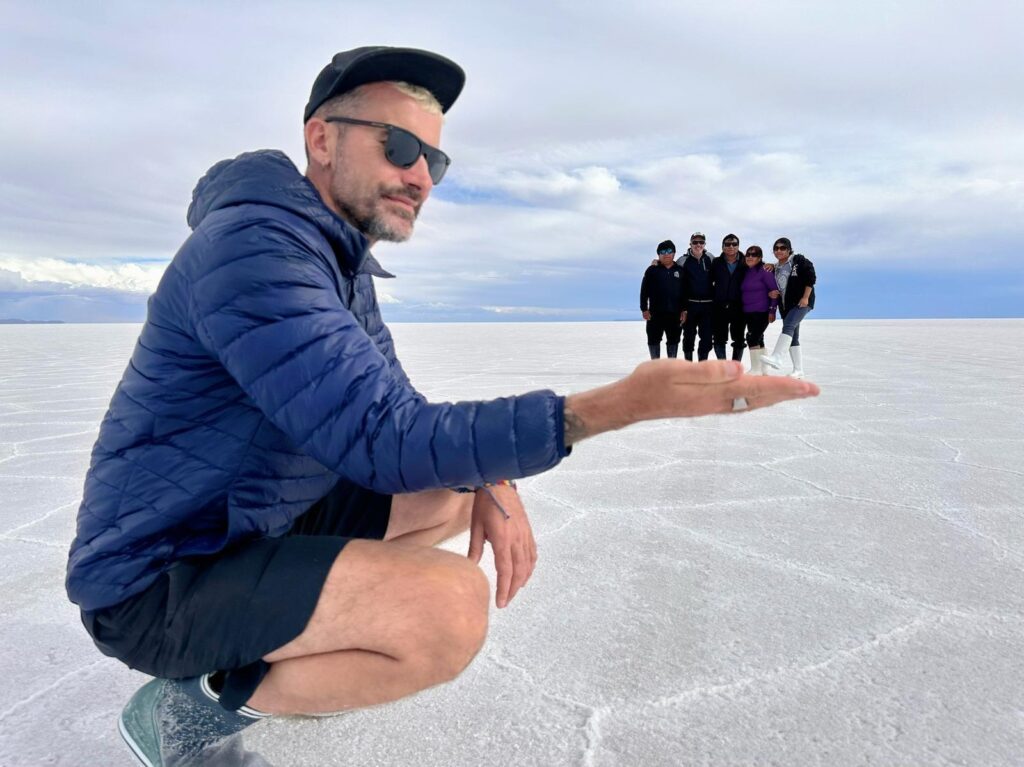
I believe that travel is one of the best ways to learn about the world and about yourself. When you travel, you’re forced to step outside of your comfort zone and experience new things. You learn about different cultures, different religions, and different ways of life. You also learn about yourself, your strengths, and your weaknesses.
Travel can also be a great way to make new friends. When you’re traveling, you’re surrounded by people from all over the world, and you’re all in the same boat. You’re all there to explore and experience new things, and that can create a bond between people.
Let’s connect together !
I hope that my travel blog will inspire others to travel and to see the world. I also hope that it will help people to learn about different cultures and to become more open-minded.
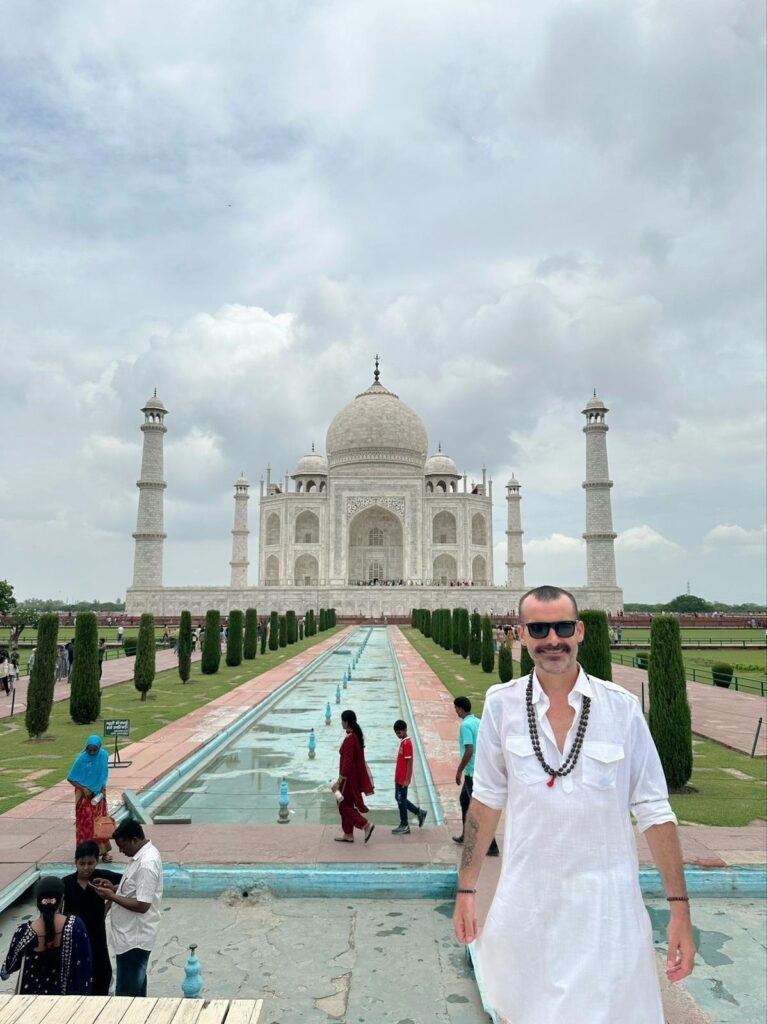

![10 Best Things To Do in Ho Chi Minh [ Must see 2025 ]](https://funkyfreshtravels.com/wp-content/uploads/2025/07/47ab8134011b1ce2bc3727aa07671bc6-768x1152.jpg)
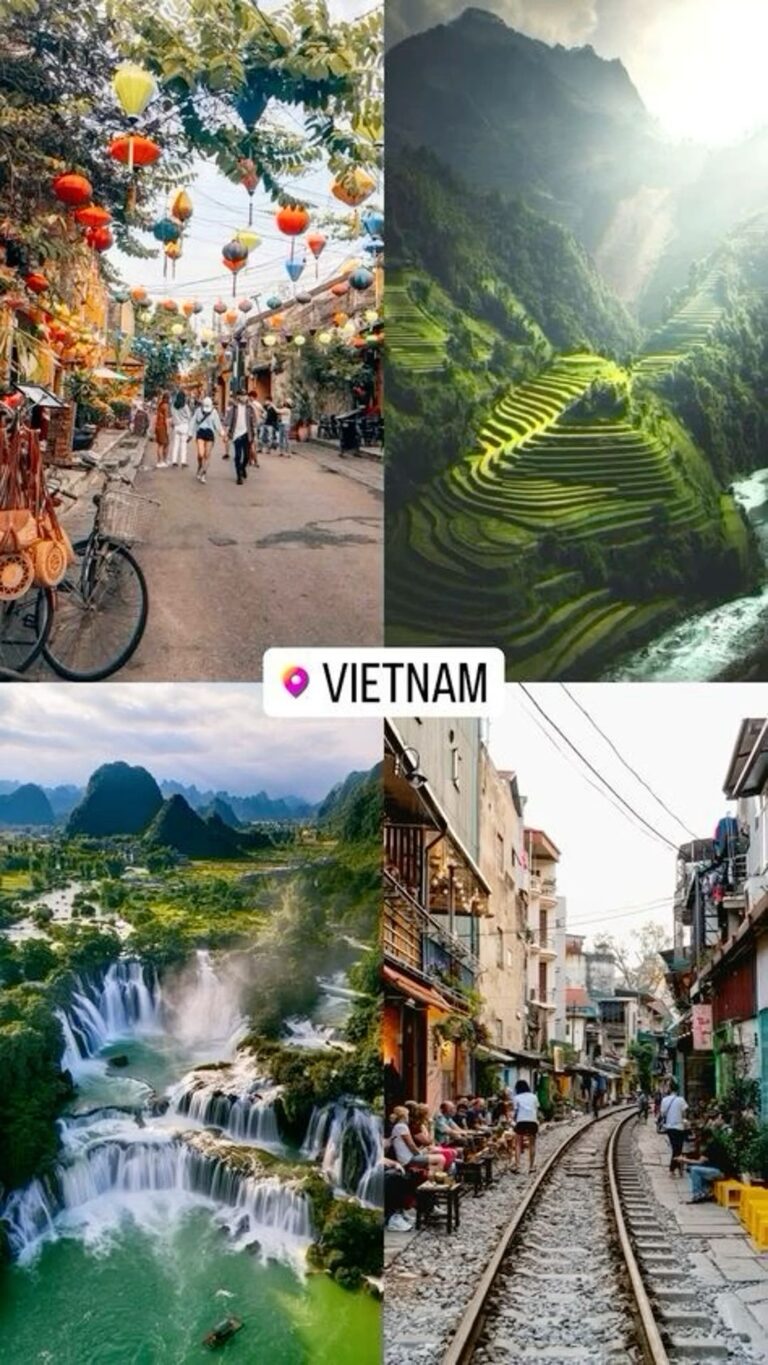

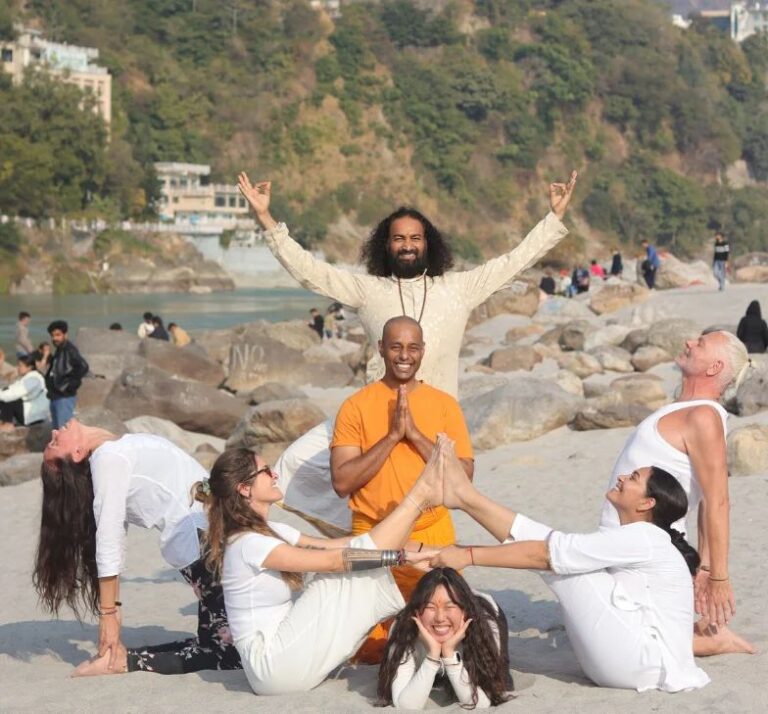
![Most beautiful places in Myanmar [ Best pictures 2025 ]](https://funkyfreshtravels.com/wp-content/uploads/2025/05/a30b9a8b6d783fdea59bae129b6fd2e5-768x605.jpg)